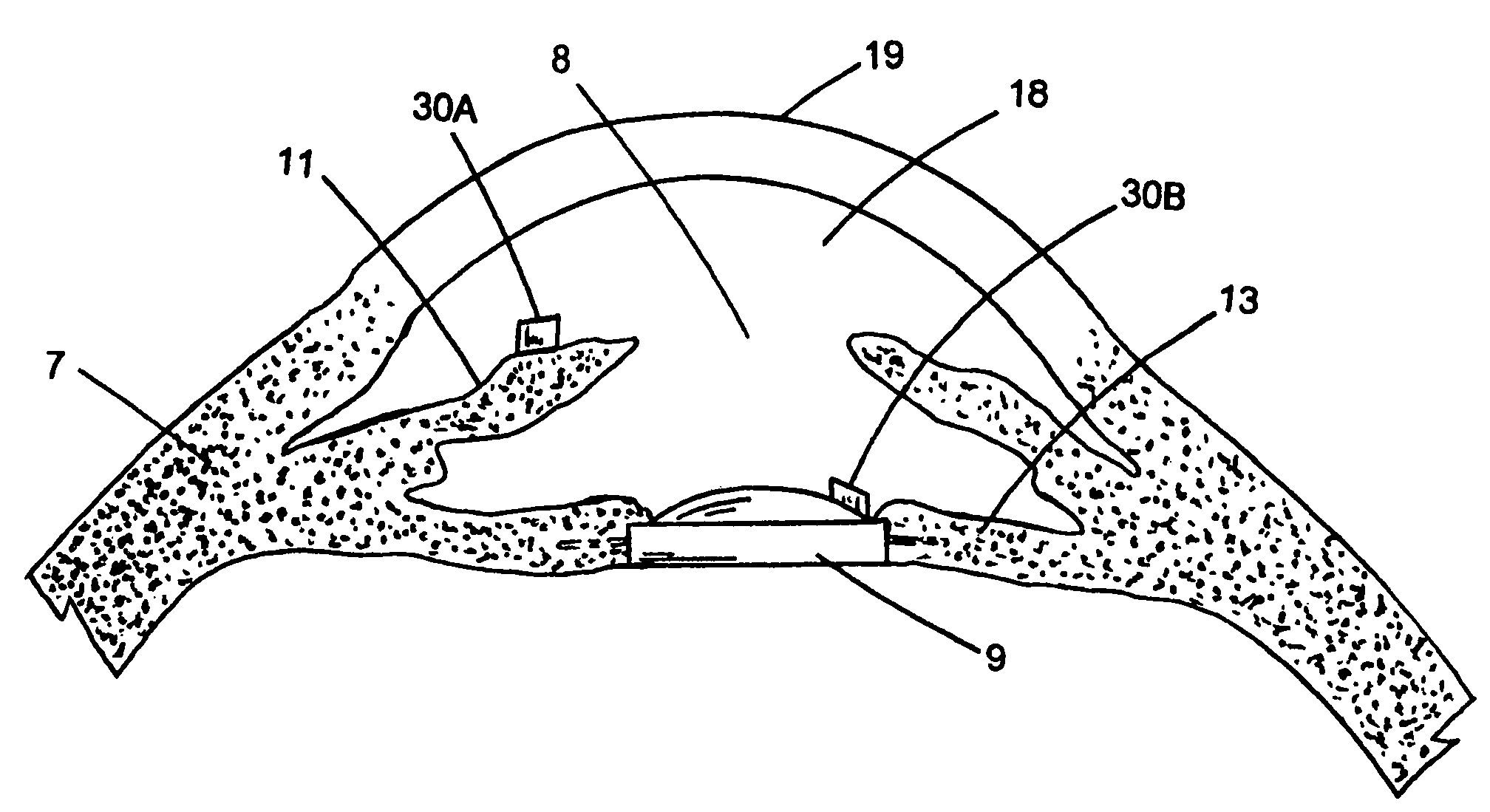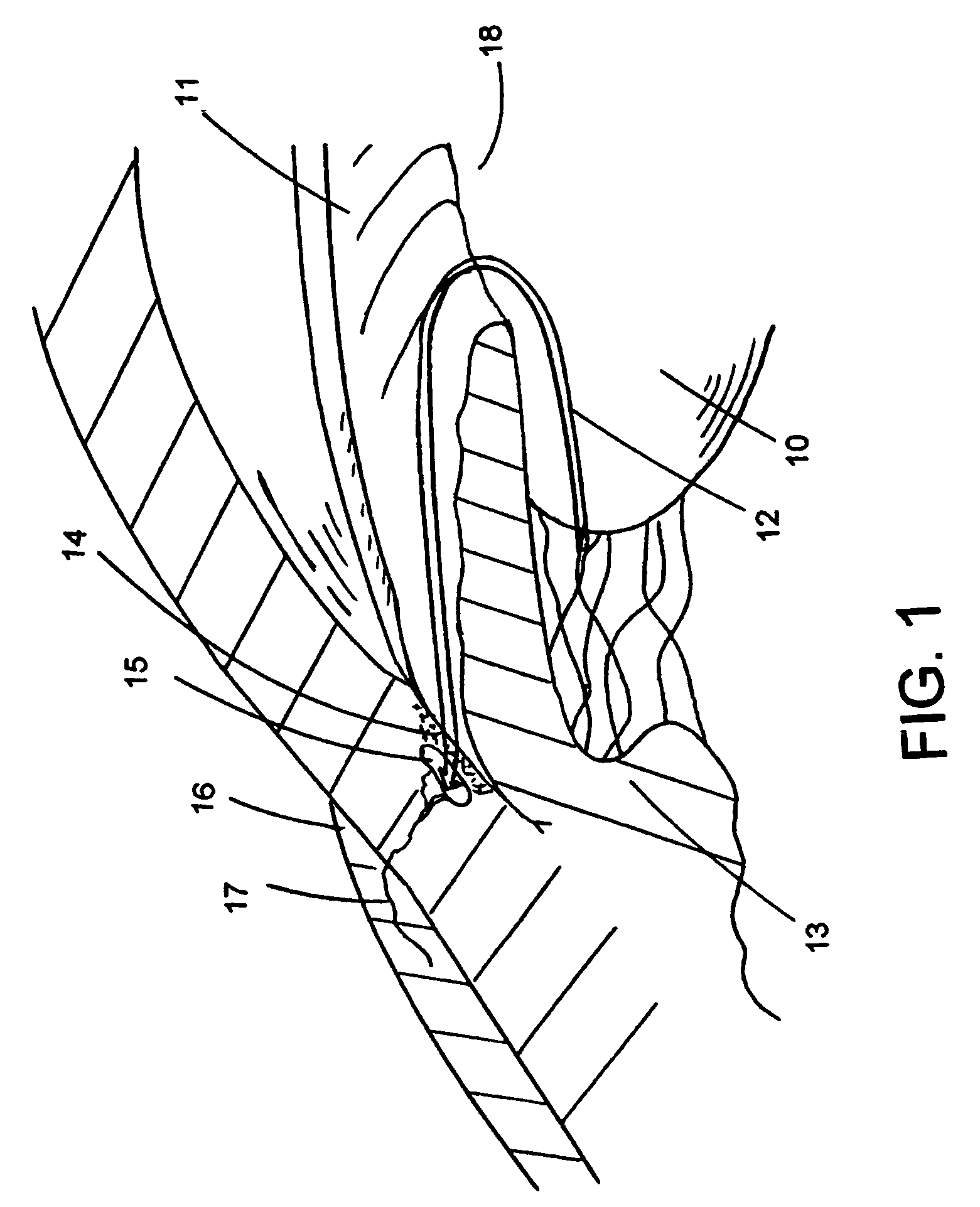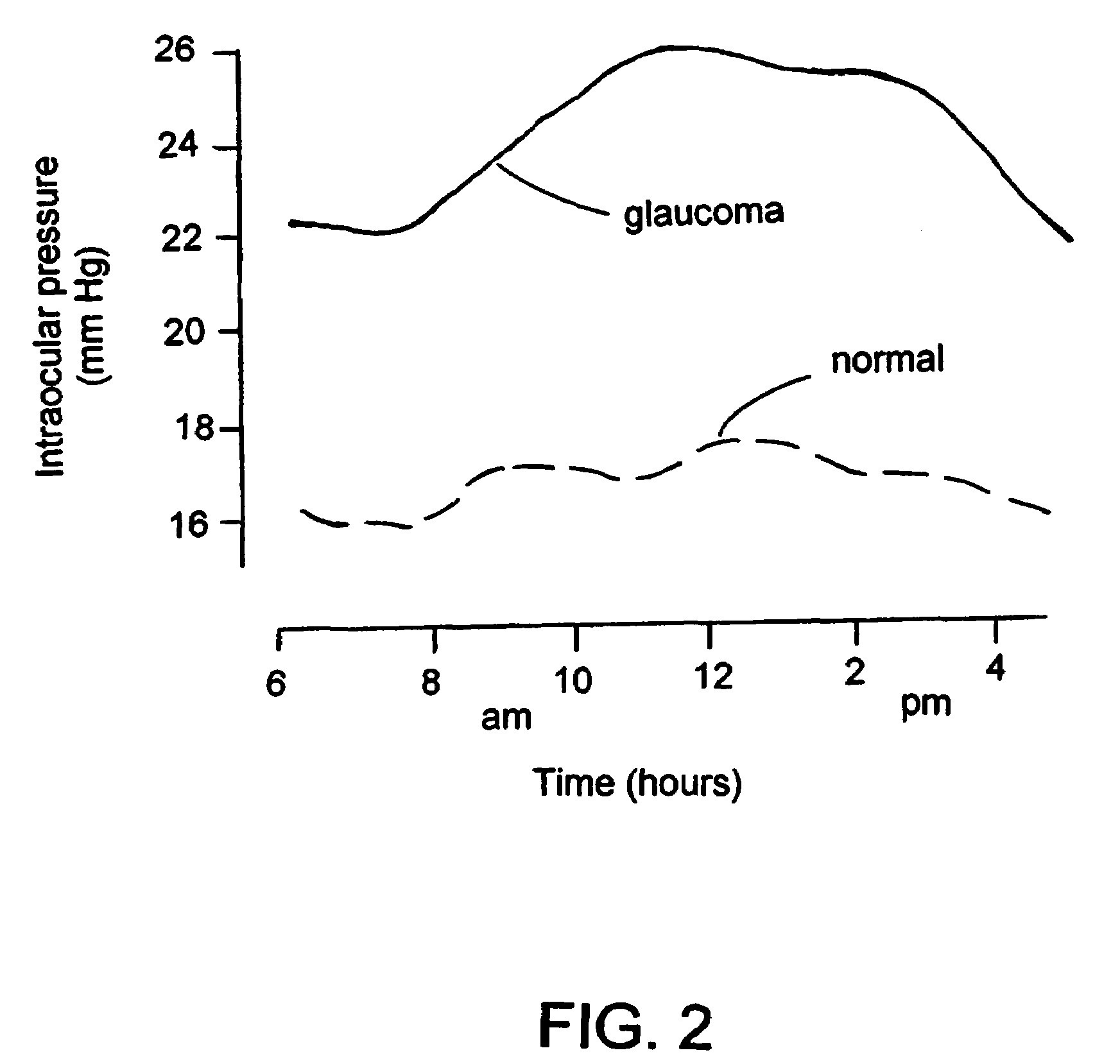Optically powered and optically data-transmitting wireless intraocular pressure sensor device
a sensor device and optical data technology, applied in the field of medical devices and, can solve the problems of not being used as a standard method of measuring, the contact ones cannot be administered in the physician's office, and the non-standard use of micromachined devices, so as to avoid/reduce artifacts
- Summary
- Abstract
- Description
- Claims
- Application Information
AI Technical Summary
Problems solved by technology
Method used
Image
Examples
Embodiment Construction
[0029]The preferred embodiments of the present invention described below relate particularly to an optically powered and optically data-transmitting wireless intraocular pressure sensor that can be implanted in the anterior chamber of an eye by securing it onto the peripheral iris tissue or onto an intraocular lens out of line-of-sight. While the description sets forth various embodiment specific details, it will be appreciated that the description is illustrative only and should not be construed in any way as limiting the invention. Furthermore, various applications of the invention, and modifications thereto, which may occur to those who are skilled in the art, are also encompassed by the general concepts described below.
[0030]FIG. 1 illustrates a general aqueous flow 12 around the front section of an eye, showing relative anatomical locations of the trabecular meshwork 14, the anterior chamber 18, and Schlemm's canal 15. The cornea 19 (FIG. 6) is a thin transparent tissue that fo...
PUM
 Login to View More
Login to View More Abstract
Description
Claims
Application Information
 Login to View More
Login to View More - R&D
- Intellectual Property
- Life Sciences
- Materials
- Tech Scout
- Unparalleled Data Quality
- Higher Quality Content
- 60% Fewer Hallucinations
Browse by: Latest US Patents, China's latest patents, Technical Efficacy Thesaurus, Application Domain, Technology Topic, Popular Technical Reports.
© 2025 PatSnap. All rights reserved.Legal|Privacy policy|Modern Slavery Act Transparency Statement|Sitemap|About US| Contact US: help@patsnap.com



